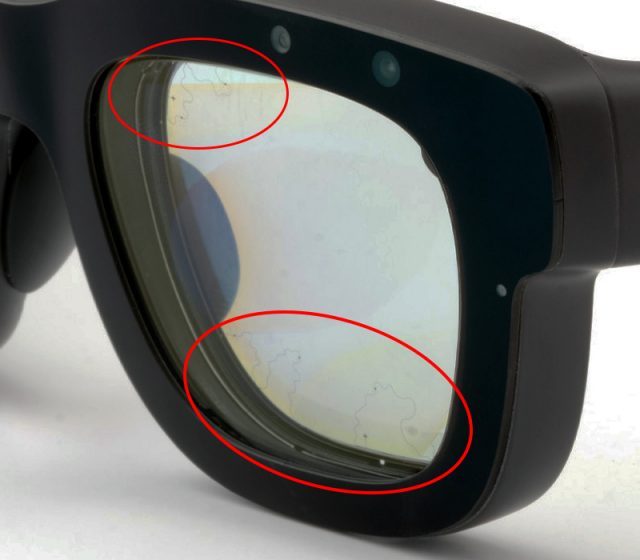Meta’s biggest reveal at last week’s Connect conference was definitely the Orion prototype AR glasses, which the company says it’s been working on for nearly five years. It’s a big deal not only because of how compact it is, but because Meta says it wants to eventually turn the prototype into a consumer product.
You may have caught our high-level coverage of the Orion headset here, but our friend Norman Chan from Tested got to sit down with Meta CTO Andrew “Boz” Bosworth to try out the glasses and learn about the Orion project. In typical form, he digs deep into the intriguing technical details of the headset. You can check out his full video below, or scroll further down to get a summary of the technical details Chan learned from his demo and conversation:
Although Orion isn’t ready for mass production, Meta says it’s planning to build around 1,000 units for internal testing. At a purported cost of $10,000 for each prototype, that’s a cool $10 million worth of hardware the company will be shelling out to get enough devices that it can do testing and development at a reasonable scale.
The Orion glasses weigh just 98 grams, which is right under the 100 grams threshold that Meta believes is important for making something that actually looks and feels like glasses rather than goggles. For comparison, the classic Ray-Ban Aviator sunglasses weigh around 30 grams, and Meta’s own Ray-Ban smartglasses weigh around 50 grams. So the Orion AR glasses might be reasonably called glasses, but they’re still chunky bois.
Still, 100 grams is incredibly lightweight if you consider that Orion is packing most of the same fundamental capabilities as Meta’s own Quest 3 headset, which is more than five times heavier at 515 grams.
In addition to the novel silicon carbide lenses we heard about, which help the glasses reach a large (for their size) 70° diagonal field-of-view, Orion also employs MicroLED projectors which are not only tiny, but super bright. Meta says they can output hundreds of thousands of nits of brightness. It’s essential to start with such a bright light source because it’s a complex optical path that loses lots of light along the way. By the time it reaches your eyes, you’ll be seeing just 300–400 nits.
That’s a bit brighter than your average VR headset, but still a long way from bright enough to use outside on a bright day. You’d need around 3,000 nits for reasonable outdoor usability. That means Meta will need to find a brighter light source, or reduce inefficiency in the optical path, if it wants Orion to be something people will wear outside of their homes.
As for resolution, Chan says the main Orion demo has a resolution of 13 pixels-per-degree, which is a bit of a surprise. Because AR glasses often have a smaller field-of-view than their VR counterparts, usually they get an advantage on PPD because the available pixels are spread over a smaller area. But even with a 70° field-of-view, Orion has only about half of the PPD of Quest 3 (25PPD).
However, Meta was apparently also demoing a similar Orion prototype that was 26 PPD, but that came at the cost of image brightness. The company told Chan that its goal is to reach a resolution of 30 PPD by the time Orion becomes a proper product. That’s still far from a ‘retina’ resolution of 60 PPD, but should be enough to make the headset useful for text-based work.
One of the most interesting details from Chan’s interview was the way Orion glasses implement eye-tracking.
Like other headsets, the technique involves illuminating the eye with a series of infrared LEDs, then point a camera at the eye to reverse-engineer the position of the eye based on the visible reflection of the IR LEDs. Usually the IR LEDs are placed in a ring around the lens, but Chan noted that Orion places absolutely tiny LEDs directly in the user’s field-of-view—right on the lens.
In order to make it all invisible to the wearer, the wires that power the LEDs are arranged in a nearly randomized pattern that you could easily mistake as a bit of hair on the lens.

A random pattern is less eye-catching than a clearly defined pattern (the basis of many optical illusions). Between the random pattern, minuscule thinness of the wires, and nearness to the eye, Chan said it was all but invisible when looking through the lens.
It was also mentioned that the ‘compute puck’, which offloads much of the processing work from the glasses, uses a custom Wi-Fi 6 protocol to communicate, with a range of 10 or so feet.
The custom protocol purportedly focuses on ‘pulsing’ data from the puck (rather than continuously streaming it) to reduce both heat production and power consumption. We can imagine this being a packet-like approach where instead of communicating constantly from the puck to the glasses, outgoing information is gathered over the course of a discrete time period before being packaged and transmitted.
While the puck is plenty large and is said to be capable of “all day” battery life, the glasses themselves can currently run for up to three hours—essentially the same battery life you’d expect from a standalone VR headset.
Compared to research prototypes shown by Meta in the past, Orion isn’t just made to give people a look at the experience the company wants to eventually deliver. Orion is more of a preview of a product that Meta is actively building.
The company says it still plans to make the glasses smaller, higher resolution, and affordable. And so far Meta says it expects the eventual consumer version of Orion should become available before 2030 and cost somewhere around $1,500.
There’s even more details packed into Chan’s video than we covered here! If you want to hear it all, check out the full video.






